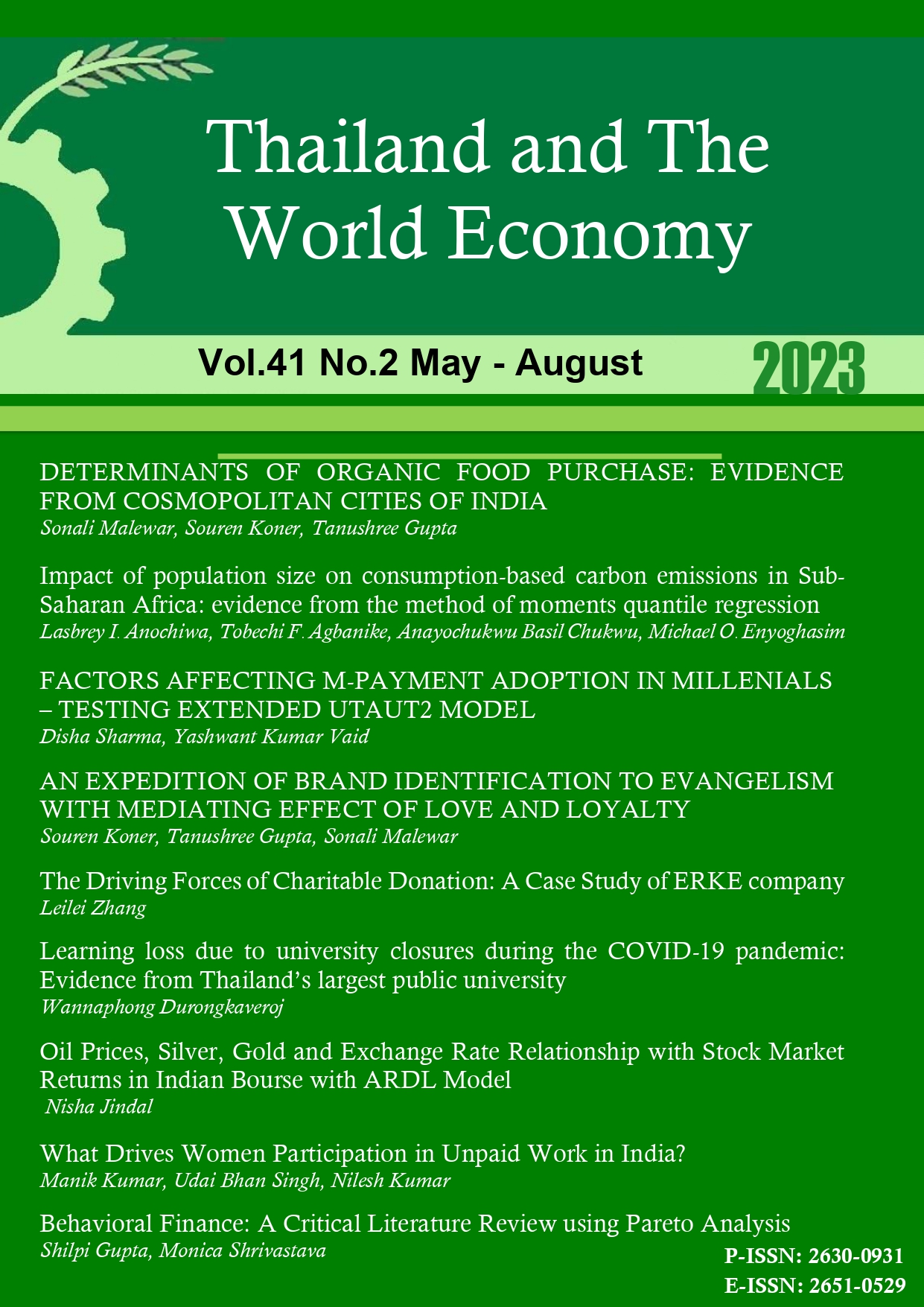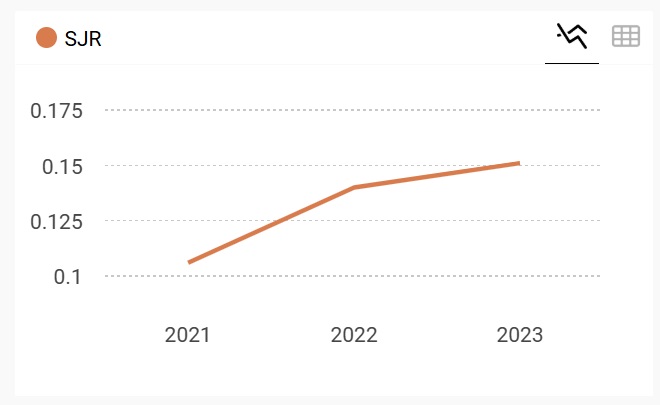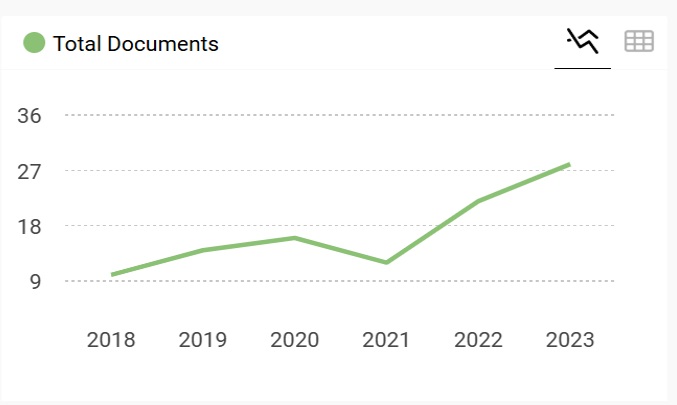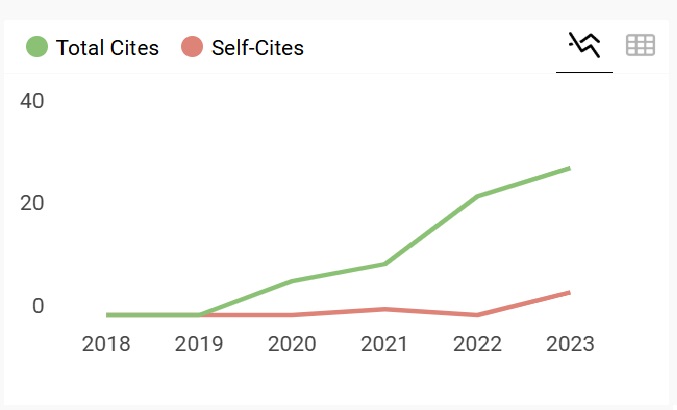Determinants of Organic Food Purchase: Evidence from Cosmopolitan Cities of India
Keywords:
Organic food, consumer, purchase intention, Self-Identity, Sensory appealAbstract
This research paper aims to explore the important factors affecting the purchase intention of organic food in the cosmopolitan cities of India, with special reference to Delhi and Bangalore. The survey instrument questionnaire was created based on proven measures. Data were collected by using email and WhatsApp for the two cities considered for the study. The research structure is developed based on the extensive literature and reveals a structural relationship between constructs. Structural equation modeling is used to investigate the relationship between constructs. The conceptual model was developed and analyzed using five constructs and 22 attributes. Among these, the strongest factor was nutritional content, followed by convenience, consumer self-identity, and sensory appeal. The findings of this study have very important implications for all stakeholders of the organic food industry, in particular for the growers and the firms that intend to expand their arena in other cities of India.
References
Ali, F., Rasoolimanesh, S., Sarstedt, M., Ringle, C., & Ryu, K. (2018). An assessment of the use of partial least squares structural equation modeling (PLS-SEM) in hospitality research. International Journal of Contemporary Hospitality Management, 30(1), 514-538. https://doi.org/10.1108/ijchm-10-2016-0568
Alvensleben, R. (1998). Ecological Aspects of Food Demand: The Case of Organic Food in Germany. AIR-CAT 4th Plenary Meeting: Health, Ecological and Safety Aspects in Food Choice, 4.
Appadurai, A. (1996). Modernity at large: Cultural dimensions of globalization (1st ed.). Minneapolis, Minnesota: University of Minnesota Press.
Aschemann, J., Hamm, U., Naspetti, S. and Zanoli, R., (2007). The Organic Market. In: W. Lockeretz (Ed.), Organic farming: An international history. Wallingford: CABI, pp.123-151.
Bartels, J., & Onwezen, M. (2013). Consumers' willingness to buy products with environmental and ethical claims: The roles of social representations and social identity. International Journal of Consumer Studies, 38(1), 82-89. https://doi.org/10.1111/ijcs.12067
Bartels, J., & Hoogendam, K. (2011). The role of social identity and attitudes toward sustainability brands in buying behaviors for organic products. Journal Of Brand Management, 18(9), 697-708.
Bhatt, S., & Shiva, A. (2020). Empirical examination of the adoption of zoom software during Covid 19 pandemic: Zoom TAM. Journal of Content, Community & Communication, 12(6), 70-88.
Botonaki, A., Polymeros, K., Tsakiridou, E., & Mattas, K. (2006). The role of food quality certification on consumers' food choices. British Food Journal, 108(2), 77-90. https://doi.org/10.1108/00070700610644906
Chakrabarti, S. (2010). Factors influencing organic food purchase in India- expert survey insights. British Food Journal, 112(8), 902-915. https://doi.org/10.1108/00070701011067497
Chakrabarti, S., & Baisya, R.K. (2007). Purchase motivations and attitudes of organic food buyers. Decision, 34(1), 1-22.
Chakrabarti, S., & Baisya, R.K. (2009). Purchase of organic food: Role of consumer innovativeness and personal influence related constructs. IIMB Management Review, 21(1), 18-29.
Chen, J., Lobo, A., & Rajendran, N. (2014). Drivers of organic food purchase intentions in mainland China- evaluating potential customers' attitudes, demographics and segmentation. International Journal of Consumer Studies, 38(4), 346-356. https://doi.org/10.1111/ijcs.12095
Chen, M. (2007). Consumer attitudes and purchase intentions in relation to organic foods in Taiwan: Moderating effects of food-related personality traits. Food Quality and Preference, 18(7), 1008-1021. https://doi.org/10.1016/j.foodqual.2007.04.004
Ćirić, M., Ilić, D., Ignjatijević, S., & Brkanlić, S. (2020). Consumer behaviour in online shopping organic food during the Covid-19 pandemic in Serbia. Food And Feed Research, 47(2), 149-158.
Cohen, J. (1988). Statistical power analysis for the behavioral sciences (2nded). Hillsdale, NJ: Lawrence Erlbaum Associates.
Collier, S. J. (2008). Global assemblages: Technology, politics, and ethics as anthropological problems. Germany: Wiley.
Dabbert, S., Haring, A.M., & Zanoli, R. (2004). Organic farming policies and prospects. Zed Books, London.
D'Amico, M., Di Vita, G., & Monaco, L. (2016). Exploring environmental consciousness and consumer preferences for organic wines without sulfites. Journal Of Cleaner Production, 120, 64-71. https://doi.org/10.1016/j.jclepro.2016.02.014
Dangour, A., Dodhia, S., Hayter, A., Allen, E., Lock, K., & Uauy, R. (2009). Nutritional quality of organic foods: A systematic review. The American Journal of Clinical Nutrition, 90(3), 680-685.
Das, S., Chatterjee, A., & Pal, T. (2020). Organic farming in India: A vision towards a healthy nation. Food Quality and Safety, 4(2), 69-76.
Davies, A., Titterington, A., & Cochrane, C. (1995). Who buys organic food? British Food Journal, 97(10), 17-23. https://doi.org/10.1108/00070709510104303
Delanty, G. (2012). Introduction. In Routledge Handbook of Cosmopolitanism Studies, edited by G. Delanty, 1–8. London: Routledge.
Durlak, J. (2009). How to select, calculate, and interpret effect sizes. Journal Of Pediatric Psychology, 34(9), 917-928. https://doi.org/10.1093/jpepsy/jsp004
El-Manstrly, D., Ali, F., & Steedman, C. (2020). Virtual travel community members’ stickiness behaviour: How and when it develops. International Journal of Hospitality Management, 88, 1-11. https://doi.org/10.1016/j.ijhm.2020.102535
Eyinade, G.A., Mushunje, A., Folaranmi, S., & Yusuf, G. (2021). The willingness to consume organic food: A review. Food and Agriculture Immunology, 32(1), 78-104.
Hair, J. F., Sarstedt, M., Hopkins, L., & G. Kuppelwieser, V. G. (2014). Partial least squares structural equation modeling (PLS-SEM). European Business Review, 26(2), 106-121. https://doi.org/10.1108/ebr-10-2013-0128
Fornell, C., & Larcker, D. (1981). Evaluating structural equation models with unobservable variables and measurement error. Journal Of Marketing Research, 18(1), 39. https://doi.org/10.2307/3151312
Fotopoulos, C., & Krystallis, A. (2002). Purchasing motives and profile of the Greek organic consumer: A countrywide survey. British Food Journal, 104(9), 730-765. https://doi.org/10.1108/00070700210443110
Franke, G., & Sarstedt, M. (2019). Heuristics versus statistics in discriminant validity testing: A comparison of four procedures. Internet Research, 29(3), 430-447.
Furst, T., Connors, M., Bisogni, C., Sobal, J., & Falk, L. (1996). Food choice: A conceptual model of the process. Appetite, 26(3), 247-266.
Geisser, S. (1975). The predictive sample reuse method with applications. Journal of the American Statistical Association, 70(350), 320-328.
Giddens, A. (2013). The Consequences of Modernity. Germany: Wiley.
Gold, M. (2007). Organic Production/Organic Food: Information Access Tools. National Agricultural Library. Retrieved from https://www.nal.usda.gov/afsic/organic-productionorganic-food-information-access-tools#define.
Gupta, T. (2021). Repayment Performance of Self Help Groups in Uttar Pradesh: An Empirical Investigation, Journal of Asian and African Studies, 57(2), 182-197, https://doi.org/10.1177/00219096211007155
Hair, J. F., Astrachan, C. B., Moisescu, O. I., Radomir, L., Sarstedt, M., Vaithilingam, S., & Ringle, C. M. (2021). Executing and interpreting applications of PLS-SEM: Updates for family business researchers. Journal of Family Business Strategy, 12(3).
Hair, J., Black, W., Babin, B., & Anderson, R. (2010). Multivariate data analysis (5th ed.). Prentice Hall.
Hair, J., Hollingsworth, C., Randolph, A., & Chong, A. (2017). An updated and expanded assessment of PLS-SEM in information systems research. Industrial Management & Data Systems, 117(3), 442-458. https://doi.org/10.1108/imds-04-2016-0130
Hair, J., Ringle, C., & Sarstedt, M. (2011). PLS-SEM: Indeed a Silver Bullet. Journal Of Marketing Theory and Practice, 19(2), 139-152.
Hair, J., Risher, J., Sarstedt, M., & Ringle, C. (2019). When to use and how to report the results of PLS-SEM. European Business Review, 31(1), 2-24. https://doi.org/10.1108/ebr-11-2018-0203
Hannerz, U. (1996). Transnational connections. London: Routledge.
Hasimu, H., Marchesini, S., & Canavari, M. (2017). A concept mapping study on organic food consumers in Shanghai, China. Appetite, 108, 191-202.
Held, D. (2002). Culture and political community: National, global, and cosmopolitan. In Conceiving Cosmopolitanism: Theory, Context, and Practice, edited by S. Vertovec and R. Cohen, 48–58. Oxford: Oxford University Press
Henseler, J., Ringle, C. M., & Sinkovics, R. R. (2009). The use of partial least squares path modeling in international marketing. Advances in International Marketing, 20, 277–319. https://doi.org/10.1108/S1474-7979(2009)0000020014
Henseler, J., Ringle, C., & Sarstedt, M. (2014). A new criterion for assessing discriminant validity in variance-based structural equation modeling. Journal of The Academy of Marketing Science, 43(1), 115-135. https://doi.org/10.1007/s11747-014-0403-8
Hjelmar, U. (2011). Consumers’ purchase of organic food products. A matter of convenience and reflexive practices. Appetite, 56(2), 336-344. https://doi.org/10.1016/j.appet.2010.12.019
Hoefkens, C., Sioen, I., Baert, K., De Meulenaer, B., De Henauw, S., … & Van Camp, J. (2010). Consuming organic versus conventional vegetables: The effect on nutrient and contaminant intakes. Food And Chemical Toxicology, 48(11), 3058-3066.
Hoffmann, S., & Schlicht, J. (2013). The impact of different types of concernments on the consumption of organic food. International Journal of Consumer Studies, 37(6), 625-633. https://doi.org/10.1111/ijcs.12044
Hu, L., & Bentler, P. (1999). Cutoff criteria for fit indexes in covariance structure analysis: Conventional criteria versus new alternatives. Structural Equation Modeling: A Multidisciplinary Journal, 6(1), 1-55. https://doi.org/10.1080/10705519909540118
Hughner, R., McDonagh, P., Prothero, A., Shultz, C., & Stanton, J. (2007). Who are organic food consumers? A compilation and review of why people purchase organic food. Journal of Consumer Behaviour, 6(2-3), 94-110. https://doi.org/10.1002/cb.210
Hustvedt, G., & Dickson, M. (2009). Consumer likelihood of purchasing organic cotton apparel. Journal of Fashion Marketing and Management: An International Journal, 13(1), 49-65. https://doi.org/10.1108/13612020910939879
India Organic Food Market Report and Forecast 2021-2026. Expertmarketresearch.com. (2021). Retrieved from https://www.expertmarketresearch.com/reports/india-organic-food-market.
Jang, Y., Kim, W., & Bonn, M. (2011). Generation Y consumers’ selection attributes and behavioral intentions concerning green restaurants. International Journal of Hospitality Management, 30(4), 803-811.
Janssen, M. (2018). Determinants of organic food purchases: Evidence from household panel data. Food Quality and Preference, 68, 19-28.
Kareklas, I., Carlson, J., & Muehling, D. (2014). I eat organic for my benefit and yours: Egoistic and altruistic considerations for purchasing organic food and their implications for advertising strategists. Journal of Advertising, 43(1), 18-32.
Kearney, J. (2010). Food consumption trends and drivers. Philosophical transactions of the royal society B: biological sciences, 365(1554), 2793-2807. doi: 10.1098/rstb.2010.0149
Kearney, M. (2004). Changing fields of anthropology: From local to global. Lanham, MD: Rowman & Littlefield Publishers.
Khurana, A., & Kumar, V. (2020). On a tardy trail: State of organic farming in India. Vikalpsangam. Retrieved 27 July 2021, from https://vikalpsangam.org/article/on-a-tardy-trail-state-of-organic-farming-in-india/.
Koner, S., Mondal, A. S., & Roy, R. (2021). Impact of Service Quality on Satisfaction. International Journal of Asian Business and Information Management, 12(3), 1–15. https://doi.org/10.4018/ijabim.294103
Koner, S., Roy, R., & Dewangan, J. K. (2022). An empirical investigation of the relationship between retail store attributes and customer satisfaction. IITM Journal of Business Studies (JBS), 10(1), 126–144.
Konvalina, P., (Ed.). (2012). Organic Farming and Food Production. London: IntechOpen. https://doi.org/10.5772/45848
Lairon, D. (2010). Nutritional quality and safety of organic food. A review. Agronomy For Sustainable Development, 30(1), 33-41. https://doi.org/10.1051/agro/2009019
Lakin, M. ,& Shannon, P. (1999) Export of frozen low-chemical and organic vegetables to East Asia and European Union: Interim Report. Brisbane: Queensland Department of Primary Industries.
Lea, E., & Worsley, T. (2005). Australians' organic food beliefs, demographics and values. British Food Journal, 107(11), 855-869.
Lee, H., & Yun, Z. (2015). Consumers’ perceptions of organic food attributes and cognitive and affective attitudes as determinants of their purchase intentions toward organic food. Food Quality and Preference, 39, 259-267.
Liang, R. (2016). Predicting intentions to purchase organic food: the moderating effects of organic food prices. British Food Journal, 118(1), 183-199. https://doi.org/10.1108/bfj-06-2015-0215
Lockie, S., Lyons, K., Lawrence, G., & Grice, J. (2004). Choosing organics: A path analysis of factors underlying the selection of organic food among Australian consumers. Appetite, 43(2), 135-146.
Lusk, J., & Briggeman, B. (2009). Food values. American Journal of Agricultural Economics, 91(1), 184-196. https://doi.org/10.1111/j.1467-8276.2008.01175.x
Magkos, F., Arvaniti, F., & Zampelas, A. (2003). Organic food: Nutritious food or food for thought? A review of the evidence. International Journal of Food Sciences and Nutrition, 54(5), 357-371. https://doi.org/10.1080/09637480120092071
Magkos, F., Arvaniti, F. & Zampelas, A. (2007). Organic food: Buying more safety or just peace of mind? A critical review of the literature. Critical Review in Food Science and Nutrition, 46(1), 23-56.
Makatouni, A. (2002). What motivates consumers to buy organic food in the UK? British Food Journal, 104(3/4/5), 345-352.
Malewar, S. And Bajaj, S. (2020). Acceptance of OTT Video Streaming Platforms In India During COVID-19: Extending UTAUT2 With Content Availability. Journal Of Content, Community and Communication, 12, 89–106, DOI:10.31620/JCCC.12.20/09.
Massey, D. B. (1994). Space, Place and Gender. Cambridge: Polity Press
McFadden, J., & Huffman, W. (2017). Willingness-to-pay for natural, organic, and conventional foods: The effects of information and meaningful labels. Food Policy, 68, 214-232. https://doi.org/10.1016/j.foodpol.2017.02.007
Mercurio, K., & Forehand, M. (2011). An interpretive frame model of identity-dependent learning: The moderating role of content-state association. Journal of Consumer Research, 38(3), 555-577.
Michaelidou, N., & Hassan, L. (2008). The role of health consciousness, food safety concern and ethical identity on attitudes and intentions towards organic food. International Journal of Consumer Studies, 32(2), 163-170.
Misra, R., & Singh, D. (2016). An analysis of factors affecting growth of organic food. British Food Journal, 118(9), 2308-2325.
Müller, T., Schuberth, F., & Henseler, J. (2018). PLS path modeling – a confirmatory approach to study tourism technology and tourist behavior. Journal Of Hospitality and Tourism Technology, 9(3), 249-266. https://doi.org/10.1108/jhtt-09-2017-0106
Nandi, R., Bokelmann, W., Gowdru, N., & Dias, G. (2016). Consumer motives and purchase preferences for organic food products: Empirical evidence from a consumer survey in Bangalore, South India. Journal of International Food & Agribusiness Marketing, 28(1), 74-99.
Nunnally, J. C. (1978). Psychometric theory. New York: McGraw-Hill Inc.
Padel, S., & Foster, C. (2005). Exploring the gap between attitudes and behaviour. British Food Journal, 107(8), 606-625.
Padel, S., Jasinska, A., Rippin, M., & Schaack, D. (2008). The European market for organic food in 2006. In H. Willer, M. Yussefi-Menzlerand, N. Sorensen (Eds), The World of Organic Agriculture – Statistics and Emerging Trends, (pp. 131-139). London: Earthscan.
Paul, J., & Rana, J. (2012). Consumer behavior and purchase intention for organic food. Journal of Consumer Marketing, 29(6), 412-422. https://doi.org/10.1108/07363761211259223
Popa, M., Mitelut, A., Popa, E., Stan, A., & Popa, V. (2019). Organic foods contribution to nutritional quality and value. Trends In Food Science & Technology, 84, 15-18.
Q&Me (2018). Vietnam Market Research Report - Vietnam EC market 2018/Q&ME. Asia Plus Inc. https://qandme.net/en/report/vietnam-ec-market-2018.html
Rana, J., & Paul, J. (2017). Consumer behavior and purchase intention for organic food: A review and research agenda. Journal Of Retailing And Consumer Services, 38, 157-165. https://doi.org/10.1016/j.jretconser.2017.06.004
Rasoolimanesh, S., Md Noor, S., Schuberth, F., & Jaafar, M. (2019). Investigating the effects of tourist engagement on satisfaction and loyalty. The Service Industries Journal, 39(7-8), 559-574.
Riboli, E., & Norat, T. (2003). Epidemiologic evidence of the protective effect of fruit and vegetables on cancer risk. The American Journal of Clinical Nutrition, 78(3), 559S-569S.
Richter, N., Cepeda, G., Roldán, J., & Ringle, C. (2015). European management research using Partial Least Squares Structural Equation Modeling (PLS-SEM). European Management Journal, 33(1), 1-3. https://doi.org/10.1016/j.emj.2014.12.001
Richter, T. (2008). Trends in the organic retailing sector in Europe 2007. In: Willer, H., Menzler, M. & Sorensen, N. (Eds), The World of Organic Agriculture – Statistics and Emerging Trends (pp. 140-147). Routledge, UK.
Schäufele, I., & Hamm, U. (2018). Organic wine purchase behaviour in Germany: Exploring the attitude-behaviour-gap with data from a household panel. Food Quality and Preference, 63, 1-11. https://doi.org/10.1016/j.foodqual.2017.07.010
Scholderer, J., & Grunert, K. (2005). Consumers, food and convenience: The long way from resource constraints to actual consumption patterns. Journal Of Economic Psychology, 26(1), 105-128. https://doi.org/10.1016/j.joep.2002.08.001
Shafie, F., & Rennie, D. (2012). Consumer perceptions towards organic food. Procedia - Social and Behavioral Sciences, 49, 360-367. https://doi.org/10.1016/j.sbspro.2012.07.034
Sharma, M., Purohit, R., & Patel, H.R. (2020). Evaluating the role of health consciousness in organic food product consumption: Mediating role of attitude, GFJMR, 20(1), 12-22.
Shepherd, R., Magnusson, M., & Sjödén, P. (2005). Determinants of consumer behavior related to organic foods. AMBIO: A Journal of The Human Environment, 34(4), 352-359. https://doi.org/10.1579/0044-7447-34.4.352
Shiva, A., Narula, S., & Shahi, S. (2020). What drives retail investors’ investment decisions? Evidence from no mobile phone phobia (Nomophobia) and investor fear of missing out (I – Fomo). Journal of Content, Community and Communication, 11(10), 2-20. https://doi.org/10.31620/jccc.06.20/02
Śmiglak-Krajewska, M., & Wojciechowska-Solis, J. (2021). Consumer versus organic products in the COVID-19 pandemic: Opportunities and barriers to market development. Energies, 14(17), 1-22.
Sparks, P., & Shepherd, R. (1992). Self-identity and the theory of planned behavior: Assessing the role of identification with "Green Consumerism". Social Psychology Quarterly, 55(4), 388-399. https://doi.org/10.2307/2786955
Steenkamp, J. (1990). Conceptual model of the quality perception process. Journal of Business Research, 21(4), 309-333. https://doi.org/10.1016/0148-2963(90)90019-a
Steptoe, A., Pollard, T., & Wardle, J. (1995). Development of a measure of the motives underlying the selection of food: The food choice questionnaire. Appetite, 25(3), 267-284. https://doi.org/10.1006/appe.1995.0061
Stok, F., Verkooijen, K., de Ridder, D., de Wit, J., & de Vet, E. (2014). How norms work: Self-identification, attitude, and self-efficacy mediate the relation between descriptive social norms and vegetable intake. Applied Psychology: Health and Well-Being, 6(2), 230-250.
Stolz, H., Jahrl, I., Baumgart, L., & Schneider, F. (2010). Sensory Experiences and Expectations of Organic Food (pp. 35-40)., Frick and Frankfurt: Research Institute of Organic Agriculture (FiBL). Retrieved from https://orgprints.org/id/eprint/20233/1/ deliverable_4_2_consumer_research.pdf
Stone, M. (1974). Cross-validatory choice and assessment of statistical predictions. Journal of The Royal Statistical Society: Series B (Methodological), 36(2), 111-133. https://doi.org/10.1111/j.2517-6161.1974.tb00994.x
Tajeddini, K., Mostafa Rasoolimanesh, S., Chathurika Gamage, T., & Martin, E. (2021). Exploring the visitors' decision-making process for Airbnb and hotel accommodations using value-attitude-behavior and theory of planned behavior. International Journal of Hospitality Management, 96, (pp. 35-40), https://doi.org/10.1016/j.ijhm.2021.102950
Theuer, R. C. (2006). Do organic fruits and vegetables taste better than conventional fruits and vegetables?. State of Science Review, The Organic Center, 50.
Thøgersen, J., & Ölander, F. (2006). To what degree are environmentally beneficial choices reflective of a general conservation stance?. Environment And Behavior, 38(4), 550-569. https://doi.org/10.1177/0013916505283832
Veeck, A., & Burns, A. (2005). Changing tastes: The adoption of new food choices in post-reform China. Journal of Business Research, 58(5), 644-652. https://doi.org/10.1016/j.jbusres.2003.08.009
Waldron, J. (2000). What is Cosmopolitan?. Journal of Political Philosophy, 8(2), 227-243.
Wier, M., O’Doherty Jensen, K., Andersen, L., & Millock, K. (2008). The character of demand in mature organic food markets: Great Britain and Denmark compared. Food Policy, 33(5), 406-421.
Willer, H., & Kilcher, L. (Eds) (2009), The World of Organic Agriculture – Statistics and Emerging Trends 2009, IFOAM, Bonn; FiBL, Frick; ITC, Geneva.
Yin, S., Wu, Linhai, Du, l. & Chen, M. (2010). Consumers' purchase intention of organic food in China. Journal of the Science of Food and Agriculture, in press, https://doi.org/10.1002/jsfa.3936.
Yiridoe, E., Bonti-Ankomah, S., & Martin, R. (2005). Comparison of consumer perceptions and preference toward organic versus conventionally produced foods: A review and update of the literature. Renewable Agriculture and Food Systems, 20(4), 193-205.
Żakowska‐Biemans, S. (2011). Polish consumer food choices and beliefs about organic food. British Food Journal, 113(1), 122-137.
Downloads
Published
How to Cite
Issue
Section
License

This work is licensed under a Creative Commons Attribution-NonCommercial-NoDerivatives 4.0 International License.









